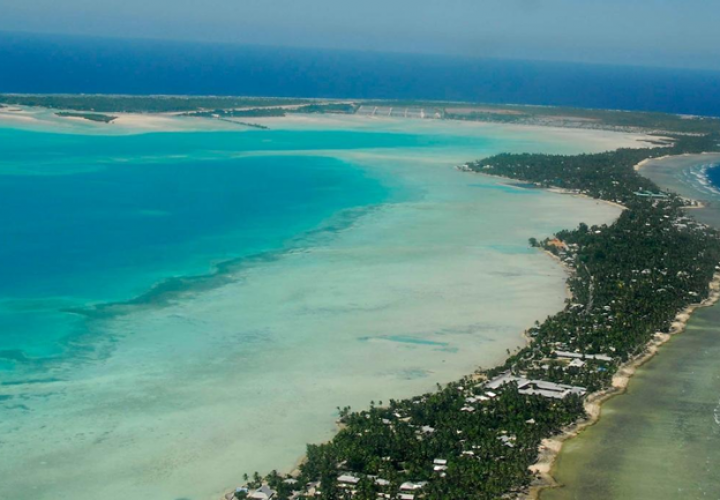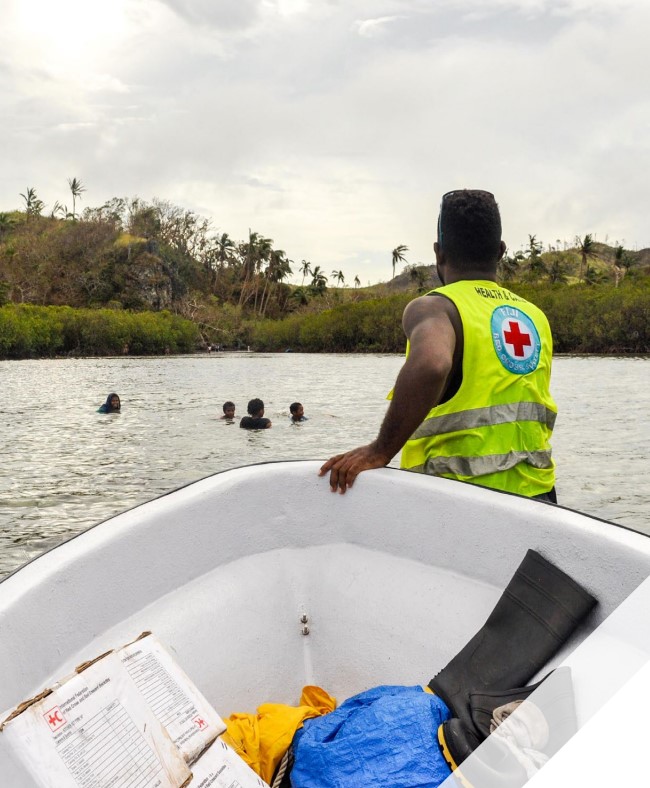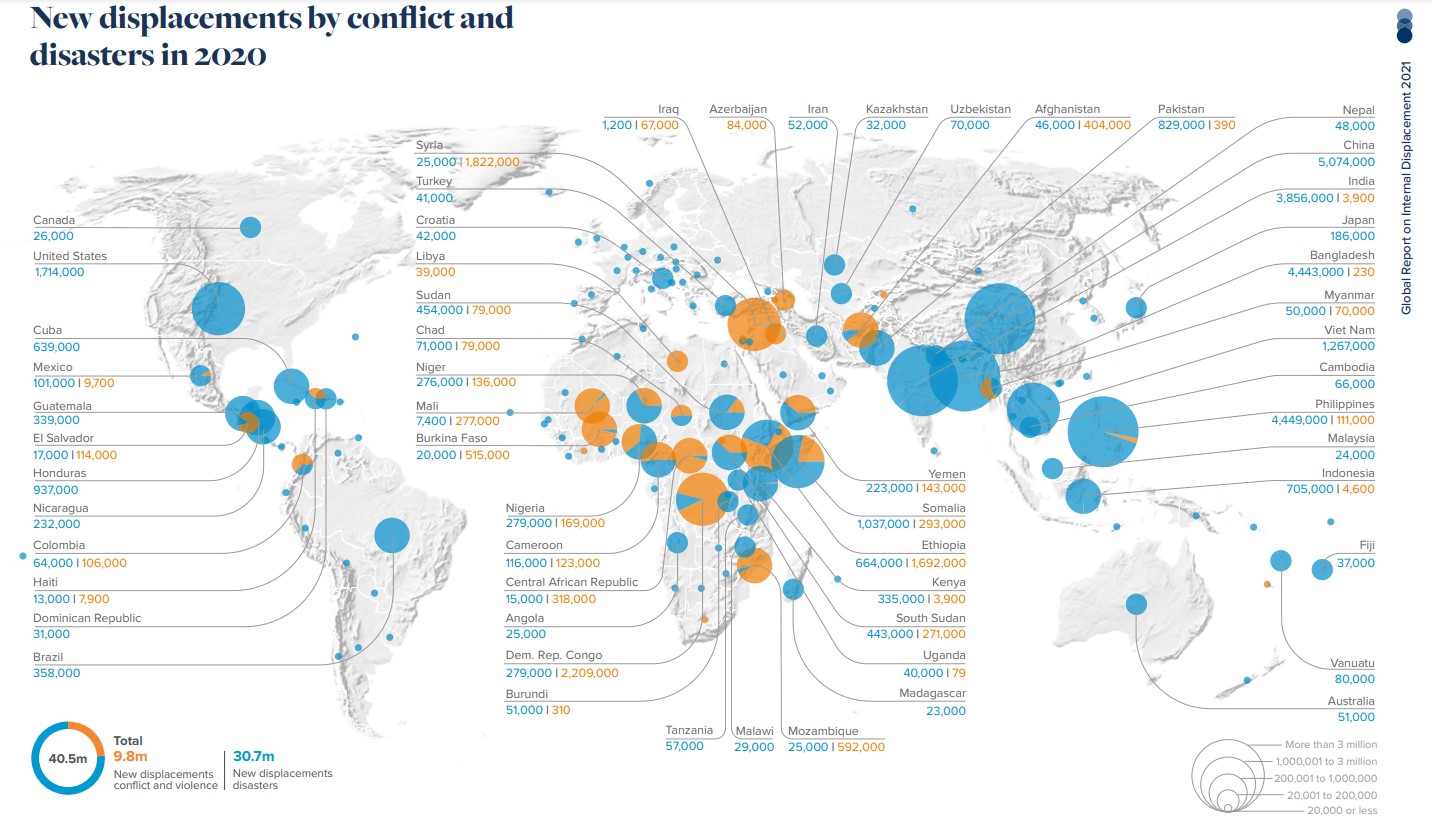
The World’s Forgotten Victims: 30 Million People Displaced Within Their Own Country
They are displaced within their own country. In 2020, 30.7 million people were forced to relocate from their homelands.
More than 9.8 million people were displaced due to armed conflict. The Institute for Economics and Peace (IEP), an Australian international think tank, points out that at least 1.2 billion people could be displaced by threats of climate change by 2050.

© Fiji Red Cross Society
Back in 2005, 100 villagers were relocated to the interior of Tegua in the South Pacific Island chain of Vanuatu, after their homes were repeatedly hit by severe storms. The United Nations environmental agency announced what may be the first case of a small island community to be officially moved out due to climate change, citing the people as the world’s first climate change refugees. Seventeen years later, 80,000 Vanuatu locals are forced to relocate due to the consequences of natural disasters.
The case of Vanuatu: Swallowed by debris
Vanuatu is a small double chain of islands in the south-western Pacific and it is home to 319,131 people according to population demographics of 2021. Almost two years ago, Vanuatu was hardest hit by the Category 5 storm, named Cyclone Harold which triggered around 80,000 internal displacements. This number might be a conservative scenario considering the outbreak of covid in the early 2020s which hindered the assessments in rural and isolated areas of the island country.
In 2020, Vanuatu accounted for one of the biggest internal displacements relative to its population size. Within two days, around 25% of the population was forced to flee their homes and seek a safe place to protect themselves either inside underground wells or inside a few infrastructures from a Catholic school. Approximately 80% of local infrastructures were destroyed, stated the International Federation of Red Cross and Red Crescent Societies (IFRC) in their report for the region.
The island country of Vanuatu represents only a tiny percent of the global movement of people, the so-called environmental refugees, namely people who are forced to relocate from their homeland or seek refuge in neighbouring countries, due to the disastrous effects of weather-related phenomena.
According to the 2021 Global Report on Internal Displacement, East Asia and Pacific accounted for 186,000 displacements due to conflict and violence and more than 12 million due to disasters (30.3% of the global total) in 2020. Accordingly, Sub-Saharan Africa and the Americas estimated more than 4 million new displacements each, South Asia more than 9 million, and Middle East and North Africa around 341,000.

©Internal Displacement Monitoring Centre
These dreadful numbers represent only a period of 12 months. On average, over 20 million people are displaced each year, without including those who leave due to situations where weather-related hazards take time to manifest, such as desertification and sea level rise.
The growing number of climate refugees in Europe
High- and medium-income countries are not left out of the equation. During the summer months, torrential rains continued to take place throughout Europe. About 4,800 displacements were recorded in the eastern region of Evia in Greece in August, and Ianos, a rare Mediterranean cyclone, hit the country in September. The frequency of the heatwaves in summer increased the risk of wildfires, which prompted 23,000 new displacements, mainly in Spain, Greece, and France. In 2020, Disaster displacement was also reported for the first time in the Netherlands, when, due to wildfires in a natural reserve, the village of Herkenbosch, home to 4,000 people, had to be evacuated.
Still no legal definition for protecting climate refugees
In 2015, Loane Teitiota, a citizen of Kiribati, an island country in Oceania, was granted refugee status in the New Zealand High Court. The basis for Mr. Teitiota’s application was that his homeland, Kiribati, is facing steadily rising seawater levels because of climate change, and sooner or later, the inhabitants of Kiribati will be forced to leave their islands.
A Refugee and Protection Officer declined Mr. Teitiota’s application. Mr. Teitiota then appealed against the Officer’s decision to the Immigration and Protection Tribunal. Although the Tribunal accepted Mr. Teitiota’s concerns about Kiribati, it dismissed his appeal, arguing that he was neither a refugee within the meaning of the Refugee Convention nor a protected person within the meaning of the International Covenant on Civil and Political Rights (ICCPR).
As the Environmental Justice Foundation experts explain in their report of 2021, in order for someone to qualify as a refugee under the 1951 Convention it is necessary to have a “well-founded fear of persecution” but it is unclear who might be considered an agent of persecution in situations of climate-induced displacement.
“There is no legal definition for these so-called climate change refugees, and they are not defined as refugees under the UN Refugee Convention. As a result, these people may fall through the cracks when it comes to protection,” said Mr. Ian Fry, the first Special Rapporteur on the promotion and protection of human rights in the context of climate change, who was appointed by the Human Rights Council at its 49th session in March 2022.
Proactive instead of reactive measures
Adaptation measures are a key aspect of handling emergency situations when they happen. However, knowing in hindsight that a certain region is vulnerable to extreme weather events, can give time to governments in order to prevent the devastating consequences. Financial support from the regional governments is a determinative step, but not a panacea. Governments should always proactively integrate climate-related displacement into national laws and strategies.
References
- Displacement in a Changing Climate, retrieved from Displacement in a Changing Climate | IFRC Global Report on Internal Displacement 2021, retrieved from https://www.internal-displacement.org/publications/2021-global-report-on-internal-displacement
- Final Report Vanuatu: Tropical Cyclone Harold, retrieved from https://reliefweb.int/report/vanuatu/vanuatu-tropical-cyclone-harold-final-report-dref-n-mdrvu008
- No shelter from the storm: The urgent need to recognize and protect climate change refugees, retrieved from https://ejfoundation.org/reports/no-shelter-from-the-storm-the-urgent-need-to-recognise-and-protect-climate-refugees
- Refworld (Refugee Decision Support), retrieved from https://www.refworld.org/pdfid/55c8675d4.pdf
- UN environmental body hails relocation of islanders threatened by climate change, retrieved from https://news.un.org/en/story/2005/12/162492
- Vanuatu: The World's First Group of Climate Change Refugee, retrieved from https://borgenproject.org/climate-change-refugee/





